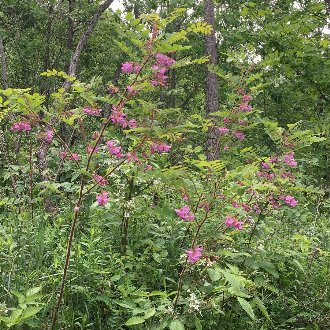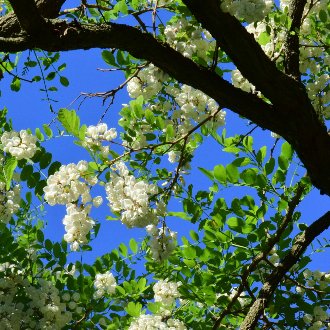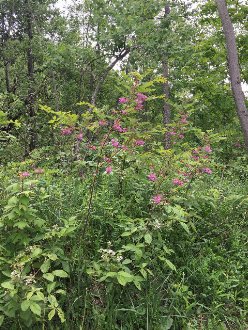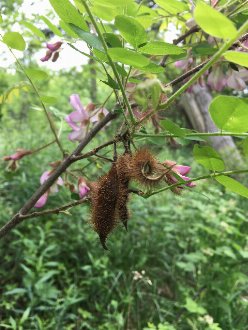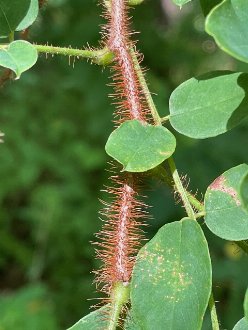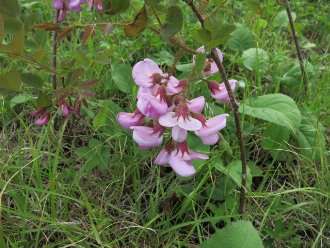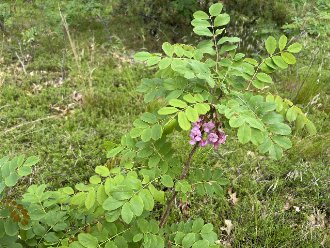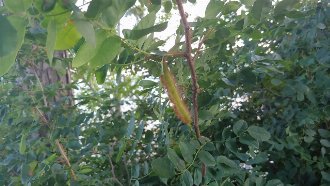Bristly Locust (Robinia hispida L.)
↑Summary
A nitrogen-fixing shrub to small tree native to the southeastern US but having greatly expanded its range north and westward.
↑Range - Expand
| Legend | Color |
| Native | |
| Introduced | |
| Expanded | |
| Introduced or Not Present | |
| Native or Expanded | |
| Expanded or Not Present |
This map is based on our research. We have checked its accuracy to Level 3 ecoregions. Although this plant occurs somewhere in each of these regions, it may only occur in a small part of some or all of them.
This species is widely planted in landscaping, and frequently escapes. Such escapes have led to it establishing broadly in new areas. We mark this new range as expanded in most of the east where it is contiguous with the native range, and as introduced in the west where populations are separated from the native range by large distances. It is subjective, however, exactly where to make this cutoff. We chose the high plains and southwestern tablelands because they have the first large gap in the range.
↑Similar Plants
↑Links & External Resources
• Robinia hispida (Bristly Locust) | Illinois Wildflowers (About This Site)
• Robinia hispida (bristly locust) | USDA PLANTS Database (About This Site)
• Robinia hispida | Go Botany (About This Site)
• Bristly Locust | iNaturalist (About This Site)
• Robinia hispida (Bristly Locust) | Missouri Botanical Garden Plant Finder (About This Site)
• Bristly Locust | Virginia Tech Dendrology Factsheets (About This Site)
• Robinia hispida | Biota of North America Project (BONAP) (About This Site)
• Robinia hispida | NatureServe Explorer (About This Site)
• Robinia hispida | Missouri Plants (About This Site)
• Bristly Locust | Maryland Biodiversity Project (About This Site)
• Robinia hispida L. (Bristly Locust) | Digital Atlas of the Virginia Flora (About This Site)



